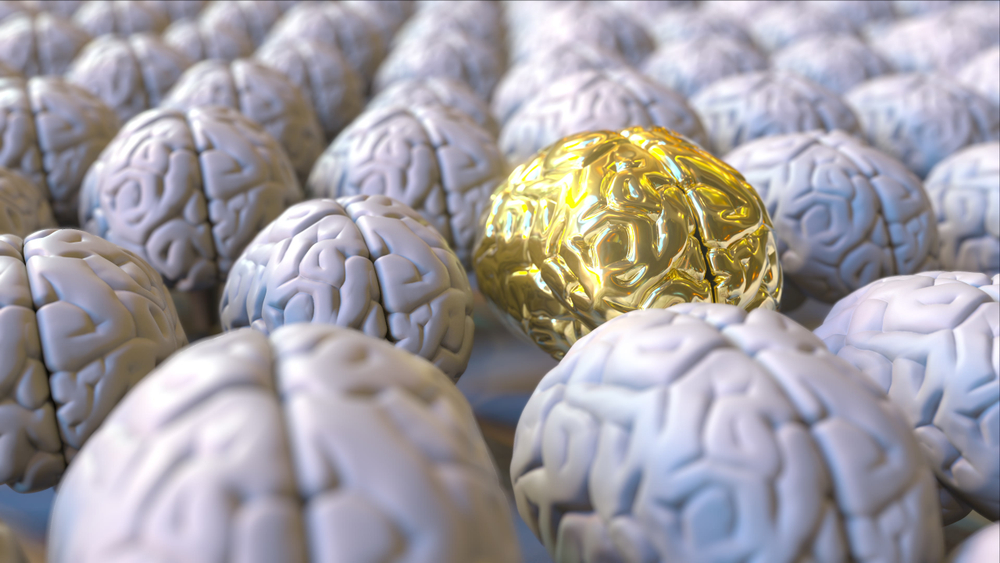Understanding opposites Math Worksheets for Ages 4-9
4 filtered results
-
From - To
Unlock the magic of learning with our "Understanding Opposites" Math Worksheets for ages 4-9! Designed to foster critical thinking, these engaging printable exercises introduce young learners to the vibrant world of opposites. Whether it's big vs. small or tall vs. short, these activities blend fun illustrations with educational content, ensuring your child grasps foundational math concepts effortlessly. Perfect for classroom use or homeschooling, these worksheets will stimulate curiosity and foster essential problem-solving skills. Step into a delightful journey of discovery and watch as your child confidently navigates the exciting realm of opposites. Boost learning with Kids Academy today!
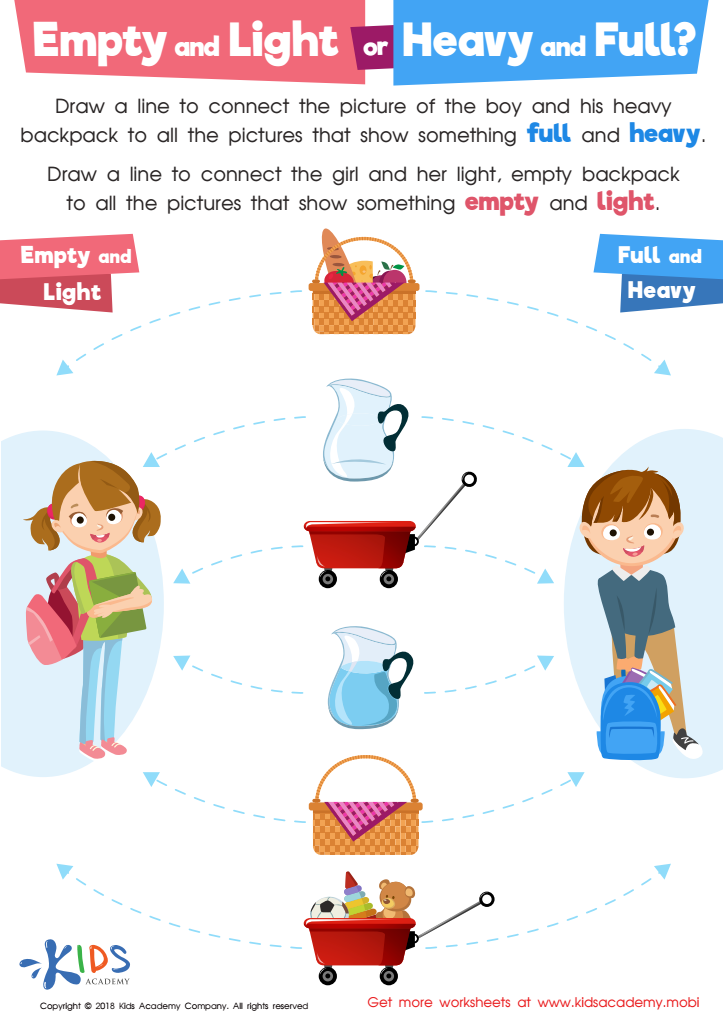

Empty and Light or Heavy and Full? Worksheet
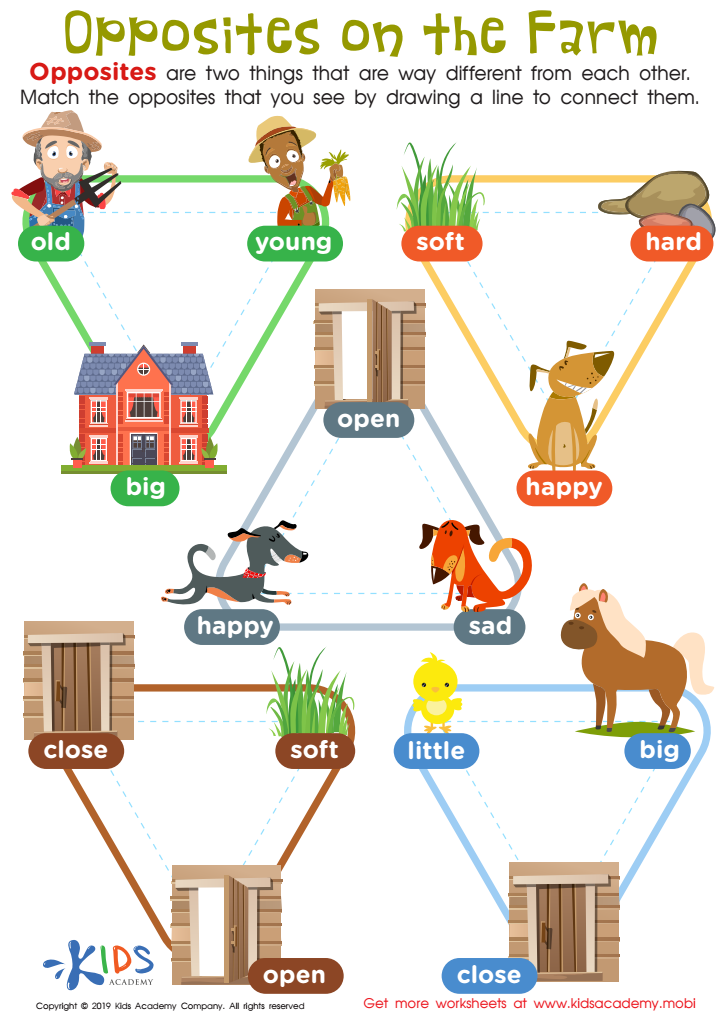

Opposites on the Farm Worksheet
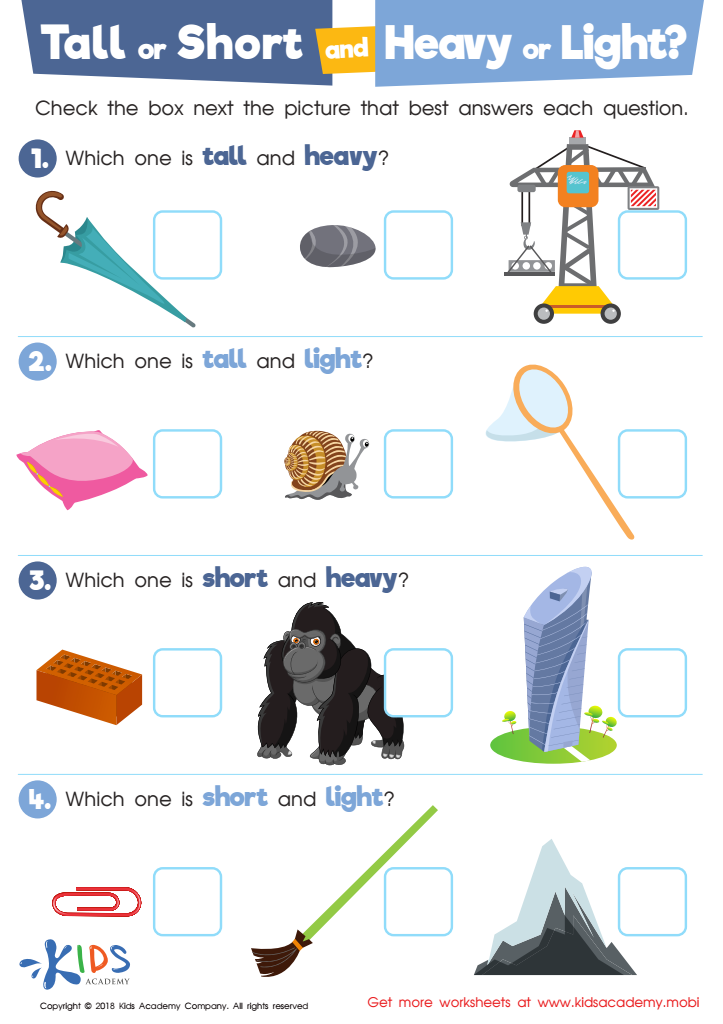

Tall or Short and Heavy or Light? Worksheet
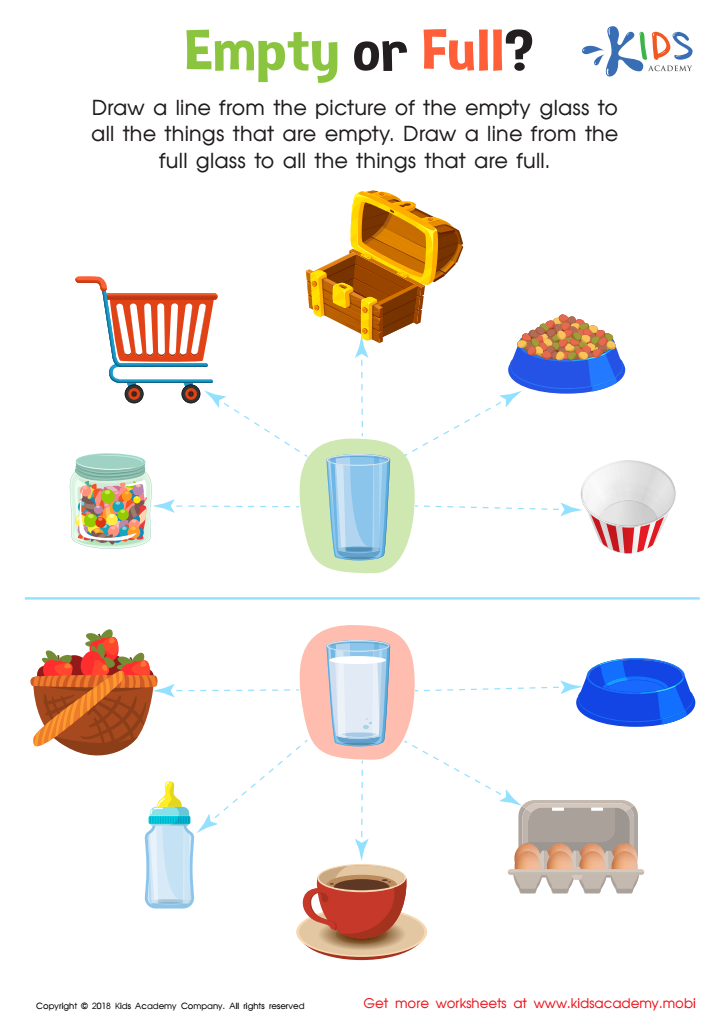

Empty or Full? Worksheet
Understanding opposites in math is a fundamental concept that significantly enhances cognitive development and foundational mathematical skills for children ages 4-9. At this stage, young learners' brains are highly receptive to grasping basic concepts that help them make sense of the world around them. Introducing opposites in math—such as up/down, left/right, more/less, and add/subtract—helps children develop critical thinking and problem-solving abilities.
For parents and teachers, emphasizing opposites prepares children for more complex mathematical concepts they will encounter later. For example, understanding that addition is the opposite of subtraction provides a clear framework for solving equations. This basic comprehension forms the bedrock for algebraic thinking, promoting better academic performance in higher grades.
Furthermore, learning about opposites encourages logical reasoning. When kids identify and demonstrate opposites, they learn to compare and contrast, identify patterns, and classify information, all of which are crucial cognitive skills. This not only supports their math education but also contributes to literacy development and overall intellectual growth.
Incorporating these concepts in everyday situations also makes learning relevant and engaging, fostering a positive attitude towards math. By prioritizing this learning at an early age, parents and teachers set children up for a seamless transition into more advanced mathematics and keen analytical thinking throughout life.
 Assign to My Students
Assign to My Students








